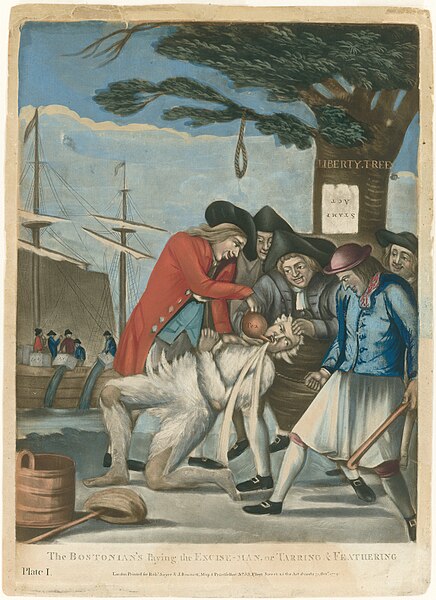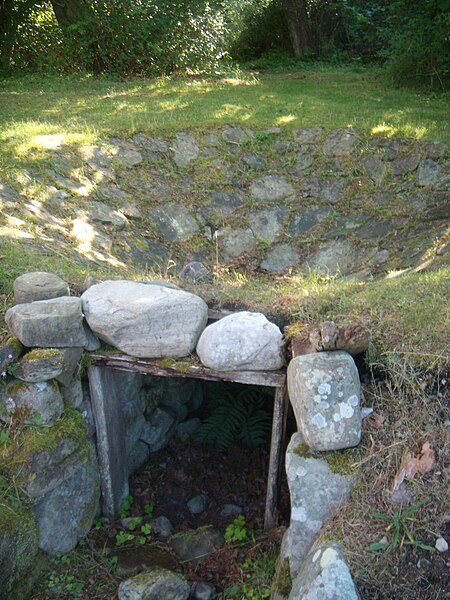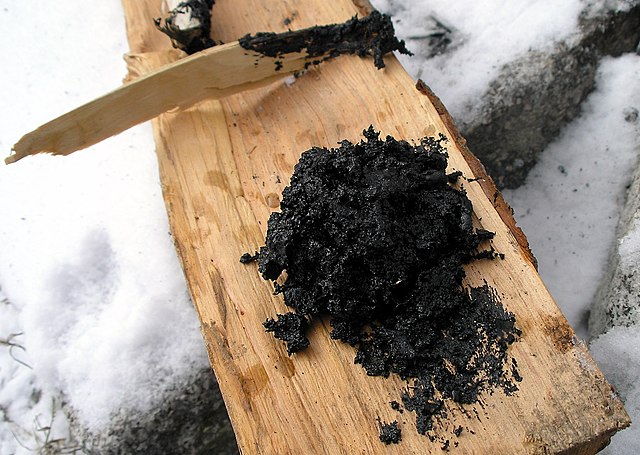Tarring and feathering is a form of public torture where a victim is stripped naked, or stripped to the waist, while wood tar is either poured or painted onto the person. The victim then either has feathers thrown on them or is rolled around on a pile of feathers so that they stick to the tar.
The Bostonians Paying the Excise-Man — a 1774 British print by Philip Dawe that depicts the tarring and feathering of Boston Commissioner of Customs John Malcolm. This was the second time that Malcolm had been tarred and feathered.
A fictional depiction of this practice in Mark Twain's 1884 novel Adventures of Huckleberry Finn.
British satirical mezzotint print of a tarred and feathered man (1770).
A victim of tarring and feathering depicted in American short film Mother's Angel (1920).
Tar is a dark brown or black viscous liquid of hydrocarbons and free carbon, obtained from a wide variety of organic materials through destructive distillation. Tar can be produced from coal, wood, petroleum, or peat.
One can produce a tar-like substance from corn stalks by heating them in a microwave oven. This process is known as pyrolysis.
Tar kiln at Trollskogen in Öland, Sweden
Birch tar
A boat transporting pine tar barrels on Oulu River in 1910








